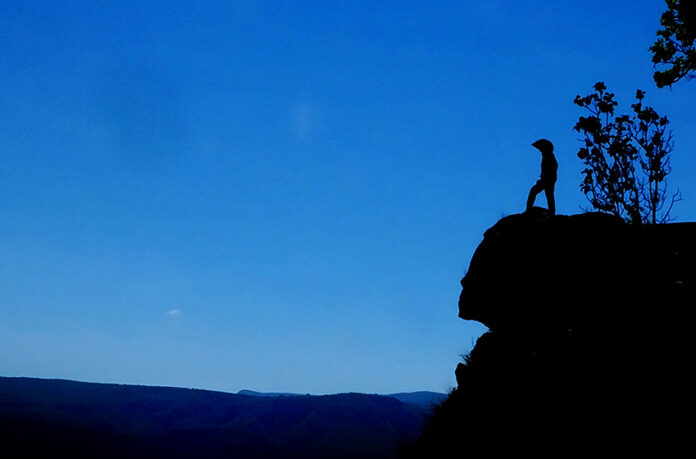Most trails in Mexico are undeveloped. Made by ordinary people trying to get from one place to another, they may be centuries old. Very few of these trails are signposted and there is nothing to warn you that the shady tree under which you’re taking a breather is poisonous and not to be touched. Below, you will find descriptions of a few plants and trees (some of them poisonous) you need to recognize before you get too close to them.
The swollen-balls tree
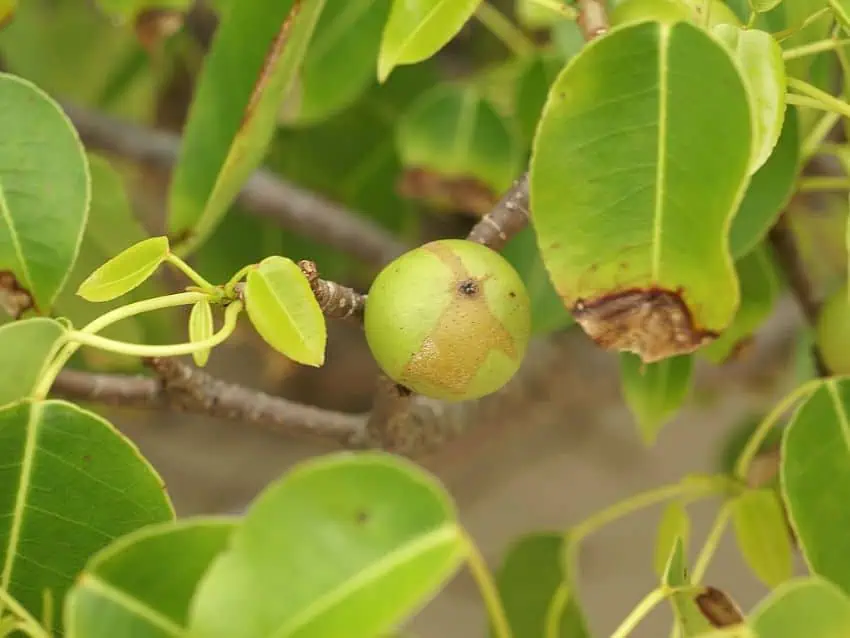
Perhaps the worst plant to run into in the wild is the manchaneel tree. Hippomane mancinella is popularly known in Mexico as the hincha-huevos: the swollen-balls tree.
We were hiking up a hill in Paso Real, located 50 kilometers from the Pacific Coast in Jalisco. My thoughts were on keeping up with our guide, don Ginio, who was taking us to the entrance of a 50-meter-deep pit no one had gone into before. Although don Ginio was wearing flip-flops and swinging a machete to clear the way, all the members of our caving group were having a hard time keeping up with him.
The hill got steeper and steeper and I helped myself along by grabbing onto every tree I came across. One of them, unfortunately, was an hincha-huevos, whose deadly fruit resembles small green apples.
It’s hard to believe, but even the hincha-huevos’ bark is poisonous— so poisonous, locals say, that simply standing downwind of the tree can get you infected. Even worse is the fate of those who stand under the tree to get out of the rain.
“The bark contains the toxin phorbol,” says poison-plant researcher Dr. Raul Ibarra. “It’s far more irritating than poison ivy.”
This was something I discovered upon arriving home. In the process of taking a shower, I managed to spread the toxic substance all over my body. It was a perfect storm of blisters and pus.
A flurry of phone calls asking for help got me an answer: “Jugo de limón!” Apparently, I had to put the juice of the ubiquitous Mexican lime all over my body. That worked. But getting rid of it was not exactly a speedy process.
An evil woman on the trail
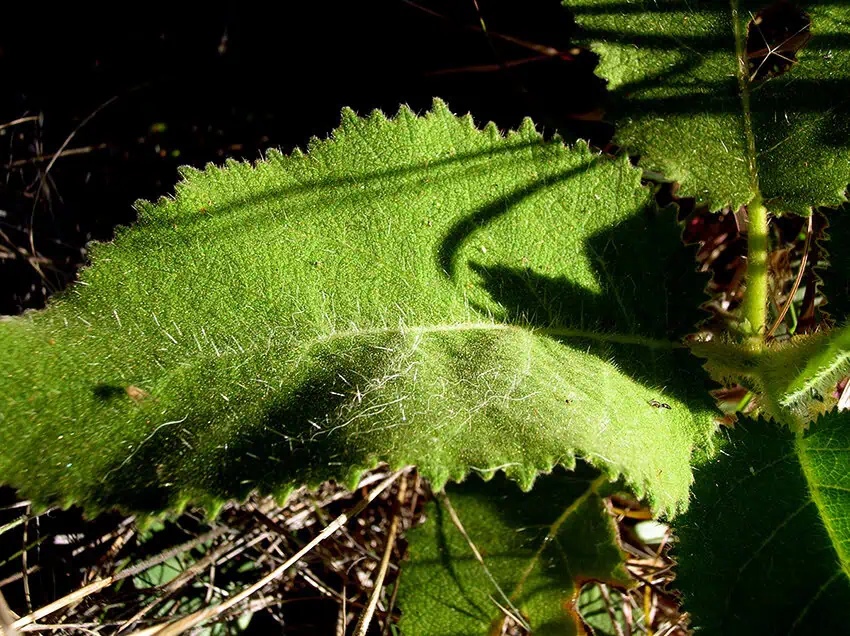
Mala mujer, or evil woman, presents much less of a problem but it’s far more common than the swollen-ball tree.
“People give the name mala mujer to several different plants,” says Raúl Ibarra.” All of them have hairs or needles on their leaves and if they brush against your skin, you will suffer a very irritating rash—but it only lasts a few minutes.”
If you see a plant whose leaves sport little hair-like needles, it is probably a variety of mala mujer.
Spiked by the cat’s claw
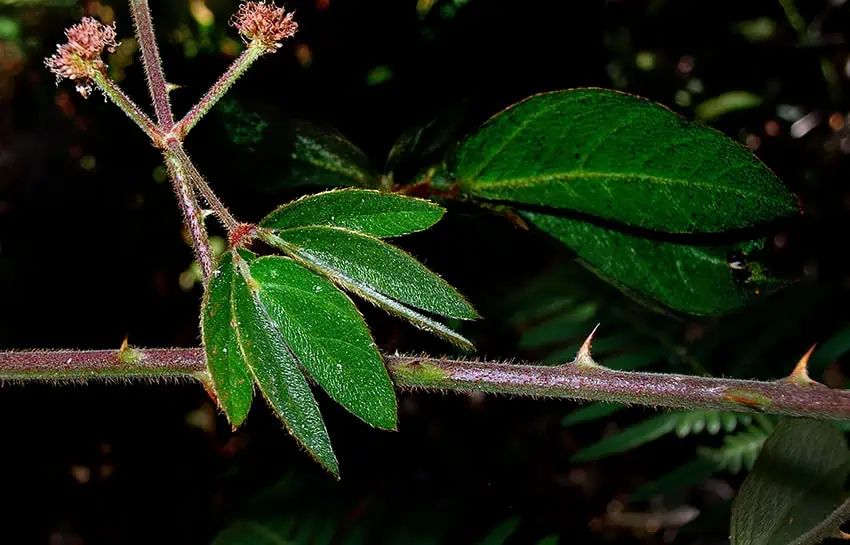
It’s important to recognize cat’s claw from a distance, before you are pushing your way through it. The leaves of the cat’s claw come in sets of six which are very easy to spot. If you’re wearing shorts or short sleeves, you’ll have to proceed slowly and carefully to avoid getting your arms or legs shredded.
The painful agave spine
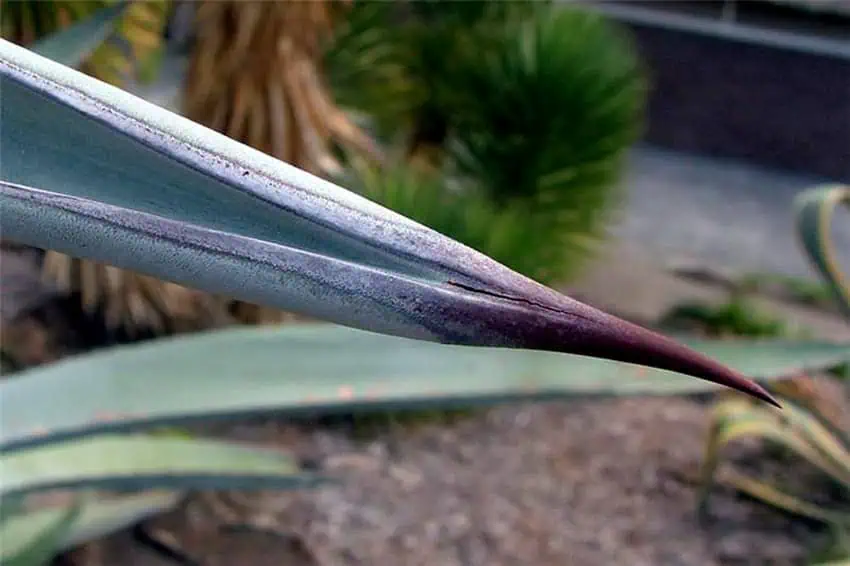
Some routes may require you to cut through an agave field. Note that if you are stuck by an agave spine, you’ll be getting something more than a needle jab: as soon as the sharp tip of the leaf penetrates your skin, it releases calcium oxalate which forms bundles of needle-like crystals called raphides. These cause sudden pain and long-lasting soreness.
With time, the swelling and pain may get worse instead of better, and in some cases the victim may end up in the hospital.
So, if you have to walk through a field of agaves or magueys, walk in the same way you would move through cat’s claw: very slowly, paying careful attention to every step you take. And, sorry to say, neither long sleeves nor long pants will be much of a help.
The deadly castor oil plant
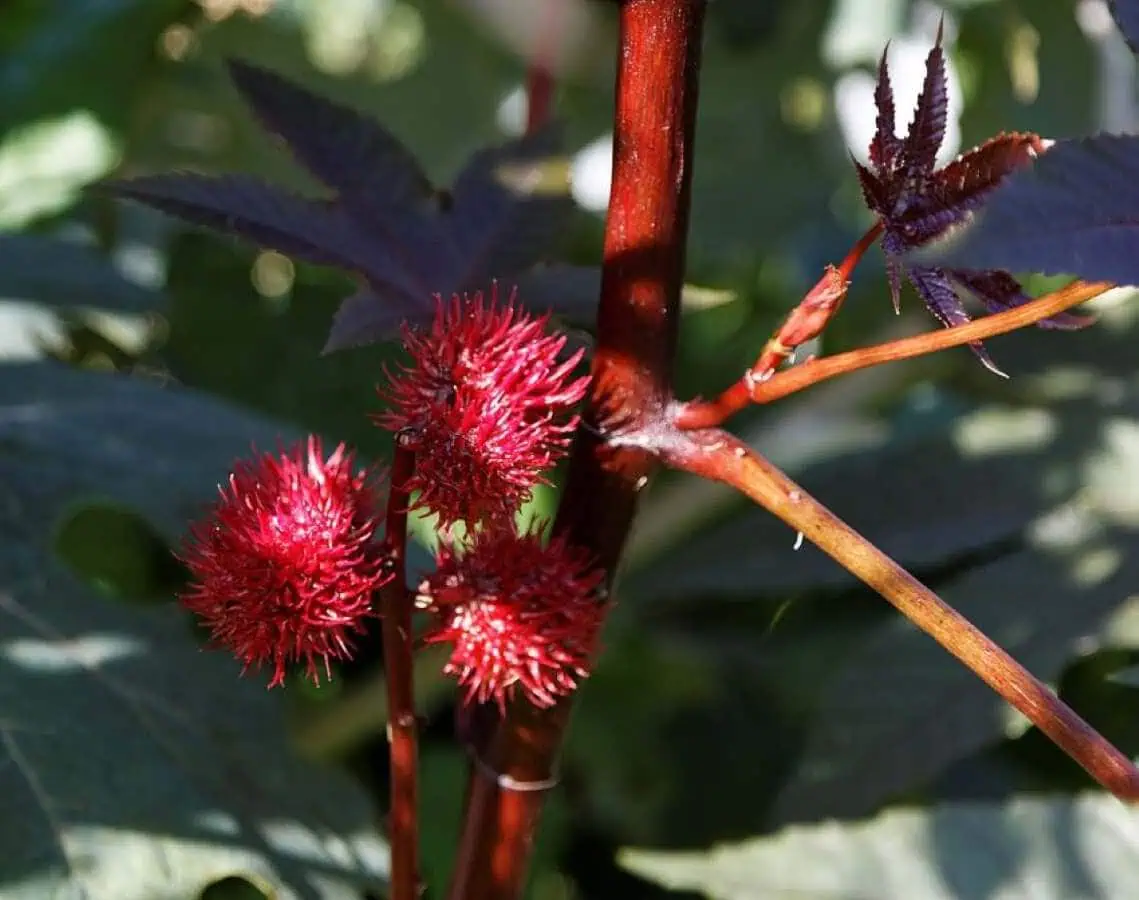
Castor bean is called higuerilla or ricino in Mexico, and you’ll find it growing everywhere, typically in empty lots or on the fringes of a forest. Touching it presents no problem, but you should be aware that its seeds are highly toxic. Chewed and swallowed, six seeds are said to be enough to kill an ox. The castor bean is the source of the biological warfare agent ricin.
Planning a hike in Mexico
Should you wear short sleeves and pants when hiking in Mexico? If you’re hiking on an established trail — especially one you’ve been on before — shorts may pose no risk.
However, it is not uncommon for hikers who have reached their destination via an established trail to opt for an atajo, or shortcut, on the way back. Beware of them!
Shortcuts are the principal reason why I wear long sleeves and long pants on most hikes, no matter what the weather. The Mexican shortcut is sure to turn whatever you’re doing into an adventure. You may be slip-sliding on loose rocks hidden beneath a knee-deep layer of dry leaves, following a machete-swinging leader through a wall of underbrush or doing a wild dance to shake off red harvester ants.
A similar situation may develop when a ranchero offers to take you to a local attraction like a hidden spring or a picturesque lookout point. Walking to the spot might easily put you into direct contact with pernicious plants, güinas (chiggers), jejenes (gnats), zancudos (mosquitoes) or a hollow log filled with very aggressive Africanized bees. That’s when long sleeves and pants may make all the difference.
John Pint has lived near Guadalajara, Jalisco, for more than 30 years and is the author of “A Guide to West Mexico’s Guachimontones and Surrounding Area” and co-author of “Outdoors in Western Mexico.” More of his writing can be found on his website.
